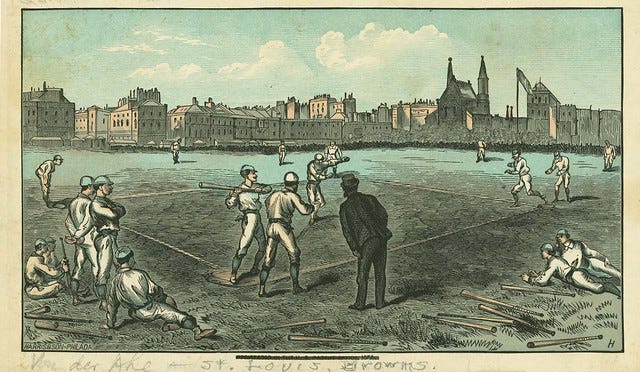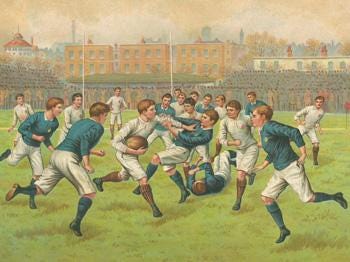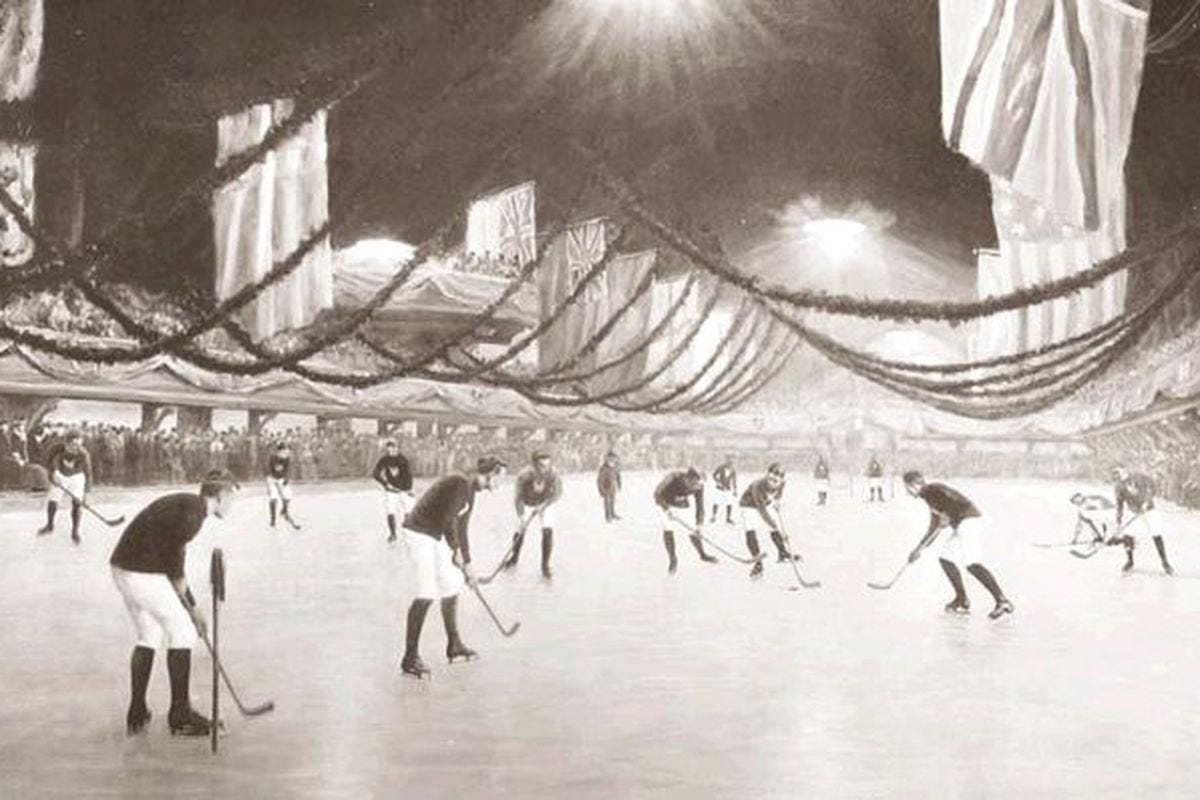Bodies in Motion Stay in Motion
Lessons from 19th Century Sports Reformers on how to solve the modern day 'low-energy' problem in Men
Modern Day Malaise

There are a few catchphrases people say that define the modern age perfectly. The most popular is probably “Busy,” the catchall answer most of us turn to when someone asks “How are you.” The runner up is “I’m too tired” as the catchall excuse. How often do you hear people say this as their excuse:
To Not exercise
To Not cook healthy meals
To Not pick up new hobbies
To Not develop a side hustle
To Not spending meaningful time with Family and Friends
The answer is TOO OFTEN. We’re plagued with a LOW ENERGY SOCIETY.
What is a Low Energy Society?
A Low energy society is filled with low energy individuals. Theser are people who
Don’t get enough sleep
Eat an artificial diet
Consume too many stimulants (coffee, energy drinks, etc…)
Watch too many screens
Don’t exercise enough
Lack sunlight and exposure to nature
They float through life giving whatever energy they have to work leaving little or nothing leftover for their families and themselves. They engage in low energy leisure activities like gambling and drinking to numb themselves.
What’s Old is New Again

This isn’t a new phenomenon, in fact it’s the nature of modernity to produce low energy individuals. The same process occurred during the earliest decades of the Industrial Revolution, the kick off to the modern age. Imagine millions of people who lived in small farming villages pouring into newly constructed cities that sprang up around massive factories. They worked 10-14 hours a day on an assembly line, doing the same thing over and over again. They lived in cramped tenement apartments with no sanitation or clean water source. The air quality was horrible as factories shot clouds of thick black smoke into the air, coal burnt to fire the factory machines. They ate artificial food created in the same factories they worked in.

Just as today many described it as a ‘crisis’ of poor health. Public Health advocate Dr. Oliver Wendell Holmes Sr. described this state in 1858. “I am satisfied that such a set of black-coated, stiff jointed, soft muscled, paste-complexioned youth as we can boast in our [American] Atlantic cities never before sprang from the loins of Anglo-Saxon Lineage.”1 Yikes!
American social reformer Thomas Wentworth Higginson described it as no less than a national emergency in 1858: “...physical health is a necessary condition of all permanent success. To the American people, it has stupendous importance because it is the only attribute of power in which they are losing ground. Guarany [sic] us against physical degeneracy, and we can risk all other perils.” 2

What did these reformers blame?
Overcrowding
Lack of proper sanitation
No greenspaces
Static lifestyle of bussiness men, professionals, middle class office workers, and factory hands.
Sports as the Cure
For such a profound problem, an even more profound solution was needed. The catchall cure? Sports and athletic pursuit.
In America it was the new game of baseball that provided the cure. Amid the factories and train tracks in the industrial parts of the cities sprang the odd shaped outfields but standard infield. A chance to bring a little bit of the field, the greenspace and nature, back into the city. Men played with vigour and intensity. The game was demanding, exciting, and the antidote to the low energy crisis affecting boys and men.
In other countries and areas different sports served the same purpose. In England, boys played cricket, rugby, and soccer and then spread these games around the world as the officer class of the British Empire.
In Canada, reformers promoted the homegrown sport of lacrosse and eventually ice hockey to combat the physical degeneracy all too common in the modern industrial city.
Crucially for these reformers were the ability of these sports to invigorate the people who played them with physical and mental energy. Canadian politician and ice hockey player R.T MacKenzie summed it up perfectly “The whole tone and surroundings of the game are healthy and good. It teaches the player to keep his wits about him, to think quickly, and to act as quickly as he thinks. It would be difficult to find a better exercise for developing the legs, back and loins, and a man must have acquired sound wind to be able to stand an hour of it.”3
Historic Wisdom to solve the modern day energy crisis
The problems that plagued the industrial modern city are intensified in the digital modern city. The same lack of sunlight, greenspaces, and nature define the modern urban landscape.
People shuffle into cars to sit on freeways or on trains that take them deep into the urban centre.
They sit at desks all day staring at screens, drinking too much coffee, never getting up and walking around.
This day in day out routine destroys energy to do anything else.
No playing sports and exercising before or after work
Weekends used to ‘unwind’ by drinking too much alcohol.
It’s no wonder so many suffer from low energy. We live in places designed to suck it out of us.
Do this activity and Take this Advice
If you suffer from low energy do a complete audit of where and how you live.
First audit your environment.
Are there places to replace sitting with walking?
Can you access nature more consistently?
Second audit your consumption.
Do you drink enough water during the day?
Am I getting balanced nutrition and do I need to supplement?
How many stimulants and depressants do you consume?
What type of entertainment do you consume when you get home to relax?
Third audit your movement
How many steps do I get a day?
Can I join a rec sports league or pick up a new athletic hobby?
My advice is the same as those old 19th century reformers.
PLAY SPORTS and adopt an ATHLETIC MINDSET. Bodies in motion stay in motion. When you exercise you gain energy. And most importantly you have a mindset and identity that matches your ability. In history we too often look for what’s different but what stays the same is just as important.
Given the similarities between our urban environments, let’s listen to the sages of the 19th century athletic movement and use sports and our own bodily energy to fight back against an environment that tilts us towards a low energy existence.
Dr. Oliver Wendell Holmes Sr, “The Autocrat at the Breakfast Table,” The Atlantic Monthly, 1, no. 7 (1858): 881.
Thomas Wentworth Higginson, “Saints, and their Bodies,” The Atlantic Monthly, 1, no.7 (1858): 588.
R.T. McKenzie, “Ice Hoceky in Eastern Canada,” The Dominion Monthly Illustrated, February 1893: 64







